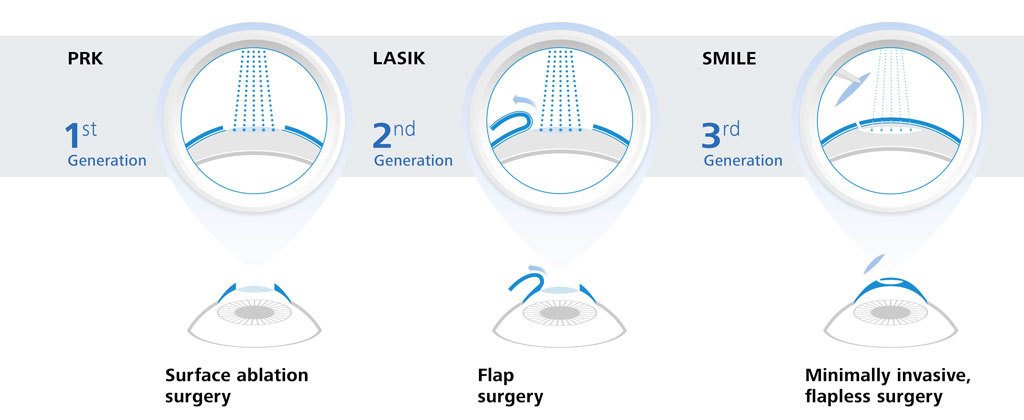Exactly How Astigmatism Impacts Vision - Typical Misconceptions And Also Misconceptions

Author-Mcbride Andersen
Astigmatism is a common eye condition that obscures distance as well as near vision. It takes place when the front surface of your eye (cornea) isn't equally rounded, however rather shaped like an egg or a football. This irregularity affects exactly how your eyes flex light, creating fuzzy vision.
It is very important to have a detailed eye test to detect astigmatism early as well as handle it with prescription lenses or LASIK surgical treatment. This can lower the demand for squinting, which can create chronic eye strain.
Myth 1: Astigmatism is brought on by scrunching up your eyes
Unlike a lot of eye issues, astigmatism is not caused by squinting. Instead, it's the outcome of irregularities in the eye's cornea as well as lens that result in blurred vision.
Normally, the cornea as well as lens at the front of your eye have a round form that permits light to focus sharply on the retina at the rear of your eyeball. With astigmatism, the cornea and also lens have even more of an oval shape, causing light to flex erratically when entering your eye. This can trigger your vision to be blurry in any way distances.
Individuals with astigmatism may scrunch up your eyes to try to boost their blurry vision, which can result in eye strain and also headaches. It is very important to see an experienced eye care professional immediately if you see squinting or various other indicators of astigmatism. Your optometrist can advise restorative glasses or get in touch with lenses to assist you see plainly in any way distances. Astigmatism is among one of the most usual refractive mistakes that burglarizes people of clear vision, along with nearsightedness (nearsightedness), hyperopia (farsightedness) as well as presbyopia (aging blur). It affects adults and children alike.
Myth 2: Astigmatism is a genetic condition
Astigmatism is a refractive error triggered when your cornea or lens have an irregular contour. This mismatch causes light that enters your eye to be bent unevenly, which can create blurry vision at all distances. Lots of people that have astigmatism are born with it, yet some may get it from eye injuries, diseases or surgery. Eye care experts aren't sure why the shape of one's cornea or lens varies from one person to another, yet they do recognize that it is hereditary and can be given through generations.
There are https://squareblogs.net/nellie7thresa/concerns-to-ask-your-lasik-specialist-before-your-treatment of astigmatism: normal and also irregular. A regular astigmatism suggests that your cornea - the clear front layer of the eye - isn't totally round like a basketball, yet it is a lot more extended, formed much more like a football. This implies that the light entering your eye strikes the retina at more than one point, which leads to blurry or altered vision. The other kind of astigmatism is irregular astigmatism, which suggests that your cornea and/or lens are bent in more than one direction or steeper in the bottom than the top.
Myth 3: Astigmatism is long-term
Many astigmatism is genetic. However it can likewise be triggered by eye injuries, surgical treatment, aging, or scarring. It may even establish from the form of your cornea or lens. The primary cause is when the primary meridians of your eyes (the steepest and also flattest parts) are not perpendicular to each other. This triggers obscured vision due to the fact that the retina can't focus plainly on the picture.
It's important to visit an optometrist if you notice any type of modifications in your vision. Motivate sees can aid catch a lot more severe issues, such as keratoconus. This condition causes the cornea to slim as well as end up being more conical. This makes it difficult to see as well as can influence deepness understanding. Scrubing your eyes can enhance your risk for this disease, as well. Dry eyes as well as allergies can likewise add to the trouble. Retina of the most usual therapy for astigmatism includes rehabilitative lenses, which can consist of glasses or get in touch with lenses. Various other choices include orthokeratology, which utilizes inflexible call lenses to improve the cornea, or laser surgical procedure.
Myth 4: Astigmatism is painful
The eye is developed to filter light into the retina and also focus it onto the rear of the eye (the cornea or lens). When these structures are misshapen, nevertheless, vision can be blurred. This refractive mistake can be corrected with prescription glasses and also contact lenses or by having astigmatic keratotomy surgical treatment, which entails making little cuts on the steepest curves of the cornea.
The most usual sign of astigmatism is blurred vision, which can make it illegible or see items in the distance, even when you are resting near them. You might also have difficulty evaluating distances or seeing plainly at night, when you are most likely to experience glare as well as halos around lights.
https://blogfreely.net/kristopher405sharita/the-relevance-of-follow-up-care-after-lasik-surgical-treatment is feasible to create astigmatism at any age or after an eye injury, however most individuals are born with this refractive mistake. Astigmatism can get worse as the eyes ages, which is why it is important to have regular eye tests to detect and treat any kind of adjustments in your vision.

